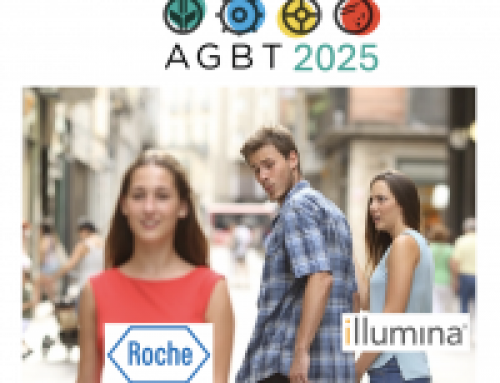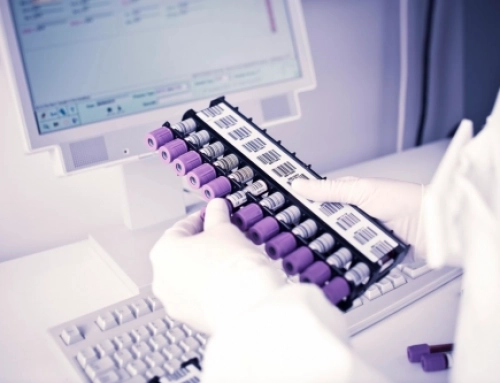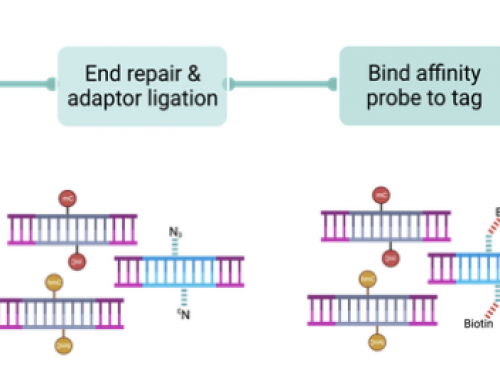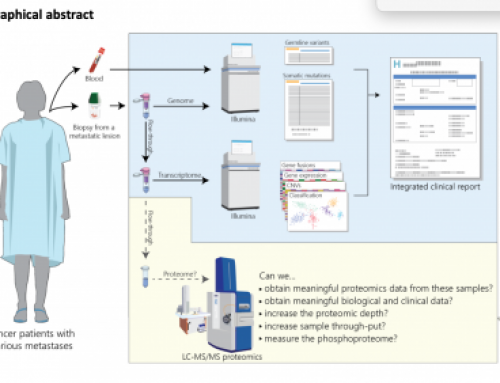Oxford Nanopore should have kits for direct RNA sequencing available later this year, and have several examples of how these might be used on their website. The method presented at London Calling (see OmicsOmics coverage), is primarily for mRNA, but it likely to be adapted for other RNA species in due course.
One of the ideas I’ve briefly thought about is using the MinION to perform ribosome profiling – a basic method would involve ligating adapters to RNA after cell lysis so Ribosomes are fixed to mRNAs with cyclohexamide treatment. Fast mode sequencing would identify the 3′ end and the transcript, then sequencing speed would be massively ramped up to zip the mRNA through the pore; the bound ribosomes should cause sequencing to stall allowing counting of stall events and therefore the number of ribosomes attached to an mRNA.
Nanopore ribosome profling: In the figure above the cells from two distinct populations would be sorted (A) and mRNA with ribosomes still attached would be extracted (B). mRNA’s are ligated with nanopore sequencing adapters (C). Nanopore sequencing shows distinct pause’s at ribosome locations allowing estimation of quantitative translation (D). This is very much an idea that has not gone much further than the back-of-an-envelope and many issues need to be considered in developing methods like this:
- Ribosomes might not survive the ONT library prep
- Ribosomes may be too firmly attached
- RNA may “slip” through the ribosome with no effect on sequencing
- Pauses in sequencing may be sequence specific
- RNA modifications may add all sorts of challenges
 |
| Figure A from Smith et al 2015 |
tRNA-seq: Mark Akeson’s group recently published work on MinION tRNA-seq where they tailed the tRNA with a leader-adapter such that the molecule unzipped from its usually highly configured 2D structure as it was sequenced through the pore (possibly it even reassembles on the other side of the membrane). Other RNA species are likely to benefit from methods similar to this including perhaps ribosomal profiling.
I think data like the tRNA-seq paper, and ideas like mine above and an earlier rRNA-seq idea, demonstrate how much more we may be able to do on a Nanopore sequencer than on our current short-read Illumina sequencers.
The future is very difficult to predict – but it is fun to try!










James, ribosome profiling with a nanopore is a really exciting idea. My understanding of ribosome profiling, as it currently works, is that it represents the composite of ribosome-bound transcripts for any given gene. This means that it isn't usually possible to assign a profile to different splice variants. A nanopore-based method would be a true single mRNA measure of translation. It would provide finer resolution and could potentially resolve differential translation of splice variants.
A hurtle to overcome for this to work (besides the ones you mention) would be determining the "footprint" of the ribosome combined with the motor and pore that are being used to sequence the mRNA. This will essentially tell you the offset between what is being read in the pore and where the ribosome is bound. Once the motor/pore/ribosome footprint is known you can correctly assign the ribosome-bound portion of the mRNA sequence.
As for tRNA sequencing and direct RNA sequencing of 16S, I see nanopore-based methods providing an unparalleled way to access information these molecules contain.
Hi Andrew, did you see Clive Bron's most recent Nanopore update where he described "blob counting"? This sounds very similar to what I'd proposed here so you might be able to do this kind of experiment much sooner than I thought.
It may be that a "fast" mode would allow rapid ribosome footprinting for large numbers of samples, whilst a "slow" mode could be used to get sequence information as well to understand isoform translation.
Cool stuff indeed!
I think the power of the helicase should rip the RNA from the ribosome. I wonder if there is a stall detected. Certinaly would be interested to see not just for ribosomes but RNA binding proteins in general. You’d have to adapt the library prep to make sure you don’t precipitate out the proteins during the various clean up steps. If the idea is to the active translating mRNAs, maybe its simpler to just isolate the polyribosomes from sucrose gradient and then do normal direct RNA seq. I guess you cannot detect pausing and other dynamics like you can in riboprofiling.